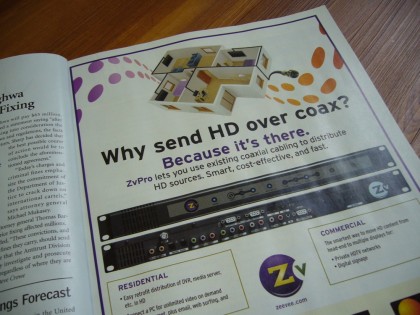
Cablevision has always danced to the beat of a different drummer. Unfortunately, their ambitious (and quite logical) network DVR was tied up in a costly, multiyear battle with the studios. Now they’re at it again and will surely ruffle feathers as they pilot a “PC to TV Media Relay” service this summer. Basically, Windows software captures the audio and video from a PC to ultimately present the content via a television. However, unlike say a SlingCatcher or Netgear’s Push2TV software-to-set-top screenscraping, this feed is transmitted back up to Cablevision’s headend and broadcast back down as a private channel on one’s cablebox. Which is more reminiscent of the original ZvBox that utilized coax and clear QAM for in-home distribution. Piping the feed beyond the home does seem a bit inefficient. But it’s surely cheaper than replacing or retrofitting every broadband modem and/or cablebox. But where’s the controversy, you ask? Beyond personal photos and videos, you know this service is best suited for watching Hulu on the big screen. And their dinosaur studio genes naturally fear evolution.
Anyone have privacy concerns about what Cablevision will be able to monitor via your PC?
Interesting concept from Cablevision. Seems like a band-aid solution, rather than a long-term one. However, it may be a quick (and inexpensive?) way to get Internet content to the TV screen.
Do you know if there is a delay between remote control clicks? It seems inefficient to send the signal up to the QAM and then back down. Isn’t there a lag?
Like you said, a nice way of doing this without requiring any new hardware. Keeping it in the home would presumably require a new gateway box that would reflect the IP output back as a channel for your TV to broadcast.
Doing it this way has obvious limits though. Your video quality is going to be limited by your upstream bit rate. Even 2Mbps upstream is pretty decent these days and might just be enough to carry an MP4 equivalent video of cable-quality SD. But it ain’t enough to do HD video. Which seems to be required really to do any web browsing other than video watching on the TV. And of course HD video won’t look any good.
Guess we’ll have to wait for some reviews to leak out…